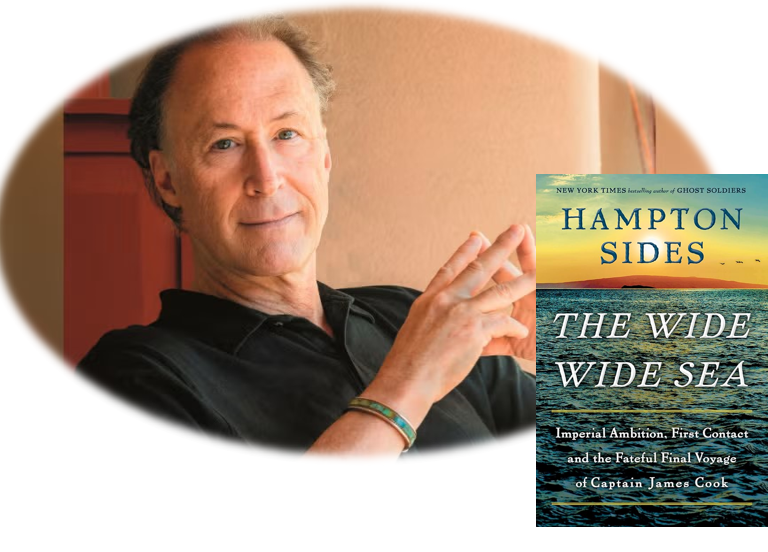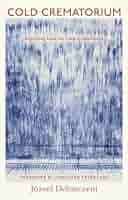The Wide Wide Sea

Hampton Sides’ The Wide Wide Sea: Imperial Ambition, First Contact, and the Fateful Final Voyage of Captain James Cook is an ambitious and multifaceted exploration of the last chapter in the life of one of history’s most famous explorers. Known for his skillful narrative style and meticulous historical research, Sides brings a fresh perspective to the story of Captain Cook’s third and final voyage. This book is not just a biography of Cook but a meditation on the broader historical implications of European exploration, imperialism, and the encounters between Western explorers and indigenous cultures.
Cook’s final voyage, which took place between 1776 and 1779, has long been a subject of fascination and debate. Cook, whose earlier voyages had made him a celebrated hero in Britain, embarked on this expedition with the goal of charting the Pacific and making further scientific discoveries. However, by the time the voyage ended in his death at the hands of Hawaiian natives, the tone of Cook’s exploration had become far more contentious and tragic. Sides focuses on this tension—between Cook’s reputation as a noble explorer and the more complicated reality of his interactions with indigenous peoples.
What sets The Wide Wide Sea apart from other works about Cook is its inclusion of the voices of the indigenous populations that Cook encountered. Sides uses indigenous oral histories alongside traditional European accounts to provide a more rounded picture of the events that took place. This perspective is invaluable, as it sheds light on the long-term effects of Cook’s voyages on the Pacific islands, including the cultural shifts and clashes that occurred as a result of European colonial ambitions. Cook’s initial respect for indigenous peoples—he was often noted for his more humane treatment of the natives compared to other European explorers—becomes increasingly strained as the realities of colonial greed, resource exploitation, and cultural misunderstanding take hold.
Sides’ careful narrative structure takes readers through the tensions of Cook’s final voyage. We witness Cook’s initial enthusiasm for discovery, the growth of his frustrations with his crew and the increasingly hostile relations with the native Hawaiians, and ultimately the tragic end of his life. By chronicling these events, Sides highlights the frailty of human ambition, particularly in the face of imperial forces and indigenous resistance.
The book also pays significant attention to the political and economic backdrop of the time. The Age of Exploration was fueled by European imperial ambitions, and Cook’s voyages were part of this broader drive for colonial expansion. Sides discusses the wider political context in which Cook operated, including the role of the British monarchy and the economic interests that motivated European exploration in the Pacific. He does not shy away from the darker aspects of Cook’s legacy—such as the role of his voyages in facilitating the European colonization of the Pacific. Cook’s encounters with indigenous peoples are framed within this imperial context, emphasizing the exploitation and violence that often accompanied the so-called “discovery” of new lands.
The book’s critical reception has been overwhelmingly positive, with many praising Sides’ ability to balance a detailed historical account with compelling storytelling. The Wall Street Journal notes that Sides “does not skirt the rapacious appetites of the British and other European monarchies,” acknowledging the darker sides of European imperialism without diminishing the importance of Cook’s scientific contributions. The Kirkus Reviews calls it “lusciously detailed and insightful,” recognizing Sides’ ability to weave a narrative that is both engaging and informative. This balance of fact and storytelling is what makes The Wide Wide Sea stand out as a historical work that is accessible to both general readers and scholars.
One of the most striking elements of The Wide Wide Sea is its ability to capture the complexity of Cook’s character. Sides does not simply present Cook as a hero or a villain; instead, he explores the internal and external forces that shaped Cook’s decisions and actions. The narrative wrestles with the contradiction between Cook’s relatively respectful treatment of indigenous peoples at the start of his voyages and the eventual conflicts that arose due to increasing tensions and the inevitability of colonial domination. The examination of Cook’s legacy reveals the tensions between idealism and the harsh realities of empire-building, making it an insightful commentary on both the era and the individual.
Sides’ writing is vivid and evocative, providing rich descriptions of the Pacific landscapes and the various peoples Cook encountered. His use of firsthand accounts—both European and indigenous—gives the narrative a sense of immediacy, as if we are living through the events alongside Cook and his crew. The book is not only a scholarly achievement but also a gripping narrative, filled with the drama, exploration, and conflict that characterized the age of discovery.
In conclusion, The Wide Wide Sea is a profound and illuminating work that examines the life and legacy of Captain James Cook in the context of imperial ambition, first contact, and the dynamics of European exploration. Hampton Sides masterfully weaves together personal stories, historical analysis, and cultural perspectives, giving readers a more complete picture of this critical moment in world history. The book offers readers a balanced portrayal of Cook, emphasizing both his achievements and the unintended consequences of his actions. For those interested in the history of exploration, colonialism, and the Pacific world, The Wide Wide Sea is an essential read that adds complexity and depth to the legacy of Captain Cook’s final voyage.



